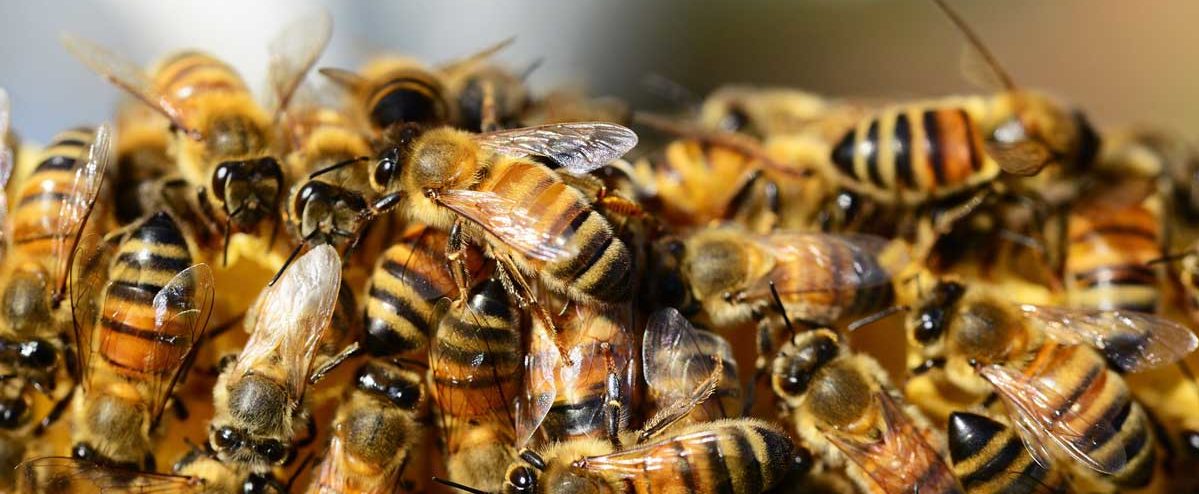Why are bees so important?
They are important because they help pollinate many types of plants including those plants that we grow for food. Without bee pollination we would have far fewer foods to eat.

Why do bees get into walls of homes?
The bees are looking for a safe home. They need a place to store their food (honey) and produce new bees. The space inside walls is excellent protection from the weather and from those animals that might want to steal their honey.
In the past wild bees could build their homes in hollowed portions of trees. But in an urban environment there are fewer trees. Therefore the bees are searching for voids in buildings and walls.
Do you save the bees or kill them?
We practice Live Bee Removal. We use humane methods to remove honey bees when possible. We will transfer the captured bees to a beekeeper in the area. We want to save as many bees as possible because they benefit our world.
Every bee removal job has its challenges and we do our very best to avoid harming the bees. However there are cases when we cannot directly access the hive or there may be structural damage issues.
How soon can you come and remove our bees?
Usually we can schedule you for same day service. Call us today.
Do you remove the bee hive?
Yes. After collecting the bees we will remove the hive – the honey and the wax comb. If the hive is left behind it will attract all types of insects.
How much does bee removal cost?
There are several factors that will determine the cost of removing bees and their bee hive. Most important is the number of bees and where their hive is located. A large hive can consists of as many as 50,000 bees and that would require more time for removal. Location is critical because our technicians have to be able to access the bee hive. Bee hives high in a tree or a home’s attic are more difficult to access. Bees inside walls will require some wall removal.
Once our technician is on-site he can give you several options and price quotes.
Is bee removal covered by homeowners insurance?
In most cases, no. In general homeowners insurance covers “sudden losses” and a bee infestation is not a sudden loss. In addition, if the bees have located their hive in a wall then some repair costs will be incurred.
How do bees get into a home’s walls?
Any opening can provide an entrance for a bee or wasp infestation. Older homes with brick walls were built with exterior wall vents (aka weep holes) to prevent moisture build-up between the exterior and interior walls. Newer homes are often built with modern moisture barriers and sealants that limit insect access to inner walls. Other possible entrance points are gable and fascia vents, soffits, cracks in walls, natural gas lines entering walls, dryer vent openings, electrical outlets, and baseboards.
What about a “Do It Yourself” bee removal option?
We do NOT recommend this option. Bees and wasps will protect their homes in large numbers and you do not want to be the object of their anger. If you are dealing with an Africanized bee colony then it could become very dangerous very quickly. Swarms of Africanized bees have killed people and livestock in the past.
When are the bees most active?
The spring season is the most active because of the flowering plants and milder weather. Honey bees, bumble bees, carpenter bees, and a variety of wasps are commonly seen in the southern United States.
Contact us today by phone or email from our Contact Us page.
